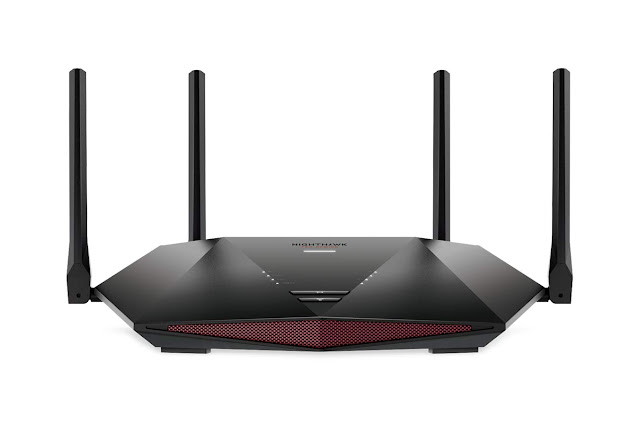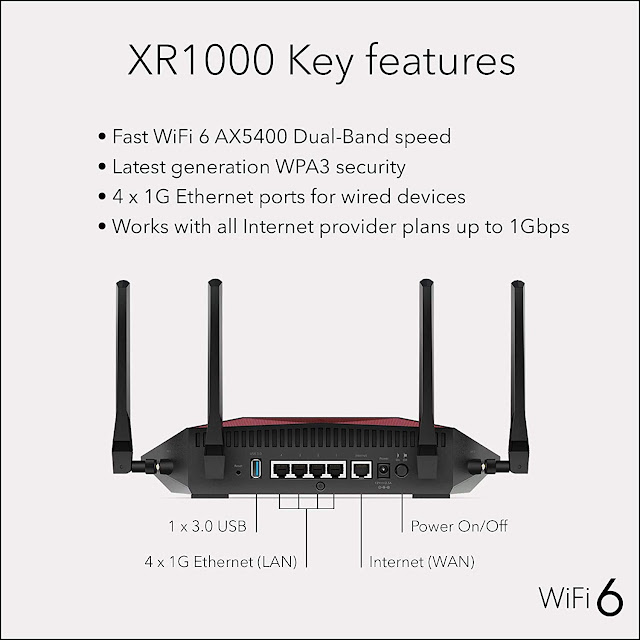Wifi 6
Hello Guys. In this blog we're going to talk about the 802.11ax wireless standard. Which is more commonly known as Wi-Fi 6. Now Wi-Fi 6 was released in 2019 and is the latest wireless standard that's used in wireless devices and is the successor to the 802.11ac Wi-Fi standard which is known as Wi-Fi 5.
Now Wi-Fi 6 is faster than Wi-Fi 5, however speed wasn't necessarily its main goal. The main goal of Wi-Fi 6 is not just an increase in speed but it was to make a Wi-Fi network perform better when a lot of devices are connected to it. And this is because today there are so many devices in our home that use Wi-Fi, such as computers, tablets, phones, security cameras, refrigerators, light switches, thermostats, and so much more. And with so many devices competing for the Wi-Fi signal, it can slow down a network because a Wi-Fi router can only communicate with so many devices at a time.
So to meet this demand engineers developed Wi-Fi 6. So what are the differences between Wi-Fi 6 and Wi-Fi 5? Well one of those differences is obviously speed. The older Wi-Fi 5 had a maximum speed of 3.5 gigabits per second. But with Wi-Fi 6 that speed has been increased to 9.6 gigabits per second, which is a significant increase. Now keep in mind this increase in speed is shared across multiple devices. It does not mean that each of your devices will achieve this speed. And also this speed is on your local area network, meaning in your home or office. This does not mean that your internet speed will increase. However it will make it seem like it's faster because of the technology that has been implemented in Wi-Fi 6. Now one of these technologies is orthogonal frequency-division multiple access or OFDMA.
Now this technology lowers latency and delivers data to multiple devices more efficiently for example let's say that Wi-Fi transmissions act like carts that deliver data to Wi-Fi devices. And let's say you have three Wi-Fi devices. Now with the older Wi-Fi 5 a cart would deliver one piece of data to one device at a time.
So each Wi-Fi device would have to wait their turn to receive data. But with the newer Wi-Fi 6 each cart would carry three pieces of data that would deliver to each device at the same time. So with Wi-Fi 5 devices will have to wait their turn to receive data. But with Wi-Fi 6 they don't have to wait because they all receive data at the same time. So this makes more efficient use of data delivery which reduces lag and another technology that Wi-Fi 6 uses is MU-MIMO which stands for multiple-user, multiple-input, multiple-output. Now this technology first made its debut in Wi-Fi 5 version 2. And what this does is that it allows multiple wireless devices to communicate with a Wi-Fi router at the same time. Now before Wi-Fi 5 routers used SU-MIMO, which stands for Single-User MIMO. And this also allowed Wi-Fi routers to communicate with multiple devices but only with one device at a time. So each device will have to wait their turn to communicate with the router. But a router with MU-MIMO, all the devices that are connected won't have to wait their turn because this allows communication to multiple devices at the same time.
It breaks up the internet bandwidth into individual streams and pushes it to the connected devices. So with this technology you'll see a significant improvement in the speed of your internet if you're doing things that require a lot of bandwidth such as streaming videos or downloading. So as I stated before MU-MIMO debuted in Wi-Fi 5 version 2, but it has improved in Wi-Fi 6. The difference is is that with Wi-Fi 5 it was only available in download and it can only support four simultaneous streams. But with Wi-Fi 6 it's available in both upload and download and it can support up to 12 simultaneous streams. And Wi-Fi 6 also has an improvement in beamforming. Beamforming is a technique that sends transmissions in a specific direction which strengthens the signal. But without beamforming, the transmission is sent in every direction which can weaken the signal which is what happens in older routers. But with newer routers the signal is directed to the devices that are connected to it.
Wi-Fi 6 also has the ability to minimize interference from nearby networks. And it does this by using a technology called basic service set coloring. So for example when you have two Wi-Fi routers next to each other such as what happens with neighbors, the signals from the two networks can overlap and cause interference with the other signal. But Wi-Fi 6 with BSS coloring, it colors or marks the networks so it can distinguish another network from its own. It marks frames from nearby networks so that your router disregards them which
makes your Wi-Fi router more efficient because the less time a Wi-Fi router gets distracted the more responsive it can be. And as far as security, i-Fi 6 has the latest security protocol which is WPA3. WPA3 provides cutting edge security features that enable a more robust authentication that will increase protection from password guessing attempts.
And in order for a device to be Wi-Fi 6 certified it must have WPA3. Wi-Fi 6 also has the ability to extend the battery life in Wi-Fi devices. And it does this by using a technology called Target Wake Time. With Target Wake Time a router or an access point schedules a time with Wi-Fi devices on when data is supposed to be sent or received. So according to that scheduled time when Wi-Fi devices are sending or receiving data, their antennas are powered on. But when they are not sending or receiving data they go into sleep mode and their antennas are powered off which saves battery life Now Wi-Fi routers will broadcast a wireless signal or frequency band so that wireless devices can connect to. And up until now they have been restricted to broadcasting two frequency bands. Which are 2.4 and 5 gigahertz. However with the new Wi-Fi 6E it'll broadcast a third band which is 6 gigahertz. The 6 gigahertz band opens up additional channels for delivering large amounts of data to Wi-Fi devices especially in crowded environments. These additional channels will result in a better network performance and a greater capacity to support more users.
who would benefit from a Wi-Fi 6 router?
well if you have a lot of wireless devices, like perhaps 15 or more, then I would definitely recommend getting one especially if you have closer to 20 devices. Because you're going to see a big difference in the performance of your network. But you also have to keep in mind that in order to reap the full benefits of Wi-Fi 6, your devices must be compatible with Wi-Fi 6.
Amazon Netgear wifi 6 router- https://amzn.to/30ymzoX





